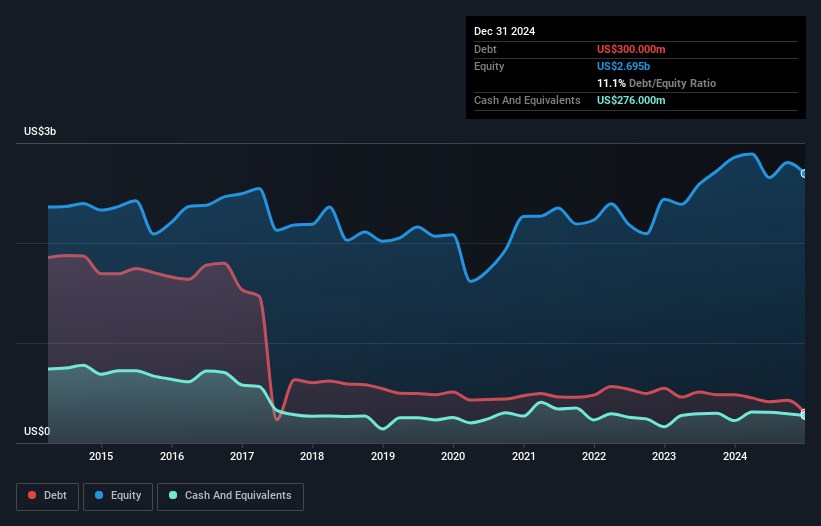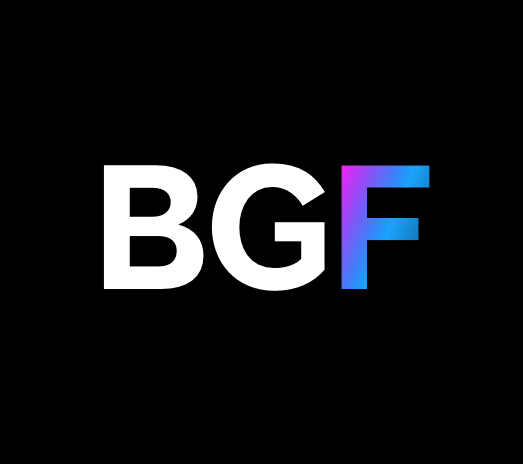- Norway
- /
- Marine and Shipping
- /
- OB:WWI
Wilh. Wilhelmsen Holding (OB:WWI) Has A Pretty Healthy Balance Sheet

Warren Buffett famously said, 'Volatility is far from synonymous with risk.' When we think about how risky a company is, we always like to look at its use of debt, since debt overload can lead to ruin. We can see that Wilh. Wilhelmsen Holding ASA (OB:WWI) does use debt in its business. But should shareholders be worried about its use of debt?
What Risk Does Debt Bring?
Generally speaking, debt only becomes a real problem when a company can't easily pay it off, either by raising capital or with its own cash flow. If things get really bad, the lenders can take control of the business. However, a more frequent (but still costly) occurrence is where a company must issue shares at bargain-basement prices, permanently diluting shareholders, just to shore up its balance sheet. Having said that, the most common situation is where a company manages its debt reasonably well - and to its own advantage. When we examine debt levels, we first consider both cash and debt levels, together.
View our latest analysis for Wilh. Wilhelmsen Holding
What Is Wilh. Wilhelmsen Holding's Net Debt?
You can click the graphic below for the historical numbers, but it shows that Wilh. Wilhelmsen Holding had US$300.0m of debt in December 2024, down from US$483.0m, one year before. However, it does have US$276.0m in cash offsetting this, leading to net debt of about US$24.0m.

How Healthy Is Wilh. Wilhelmsen Holding's Balance Sheet?
The latest balance sheet data shows that Wilh. Wilhelmsen Holding had liabilities of US$637.0m due within a year, and liabilities of US$426.0m falling due after that. On the other hand, it had cash of US$276.0m and US$254.0m worth of receivables due within a year. So it has liabilities totalling US$533.0m more than its cash and near-term receivables, combined.
This deficit isn't so bad because Wilh. Wilhelmsen Holding is worth US$1.52b, and thus could probably raise enough capital to shore up its balance sheet, if the need arose. But we definitely want to keep our eyes open to indications that its debt is bringing too much risk.
In order to size up a company's debt relative to its earnings, we calculate its net debt divided by its earnings before interest, tax, depreciation, and amortization (EBITDA) and its earnings before interest and tax (EBIT) divided by its interest expense (its interest cover). This way, we consider both the absolute quantum of the debt, as well as the interest rates paid on it.
While Wilh. Wilhelmsen Holding's low debt to EBITDA ratio of 0.20 suggests only modest use of debt, the fact that EBIT only covered the interest expense by 3.0 times last year does give us pause. So we'd recommend keeping a close eye on the impact financing costs are having on the business. Unfortunately, Wilh. Wilhelmsen Holding saw its EBIT slide 6.8% in the last twelve months. If earnings continue on that decline then managing that debt will be difficult like delivering hot soup on a unicycle. The balance sheet is clearly the area to focus on when you are analysing debt. But it is future earnings, more than anything, that will determine Wilh. Wilhelmsen Holding's ability to maintain a healthy balance sheet going forward. So if you want to see what the professionals think, you might find this free report on analyst profit forecasts to be interesting.
Finally, a business needs free cash flow to pay off debt; accounting profits just don't cut it. So it's worth checking how much of that EBIT is backed by free cash flow. Over the last three years, Wilh. Wilhelmsen Holding recorded free cash flow worth a fulsome 88% of its EBIT, which is stronger than we'd usually expect. That positions it well to pay down debt if desirable to do so.
Our View
Both Wilh. Wilhelmsen Holding's ability to to convert EBIT to free cash flow and its net debt to EBITDA gave us comfort that it can handle its debt. Having said that, its interest cover somewhat sensitizes us to potential future risks to the balance sheet. When we consider all the elements mentioned above, it seems to us that Wilh. Wilhelmsen Holding is managing its debt quite well. But a word of caution: we think debt levels are high enough to justify ongoing monitoring. When analysing debt levels, the balance sheet is the obvious place to start. But ultimately, every company can contain risks that exist outside of the balance sheet. For instance, we've identified 1 warning sign for Wilh. Wilhelmsen Holding that you should be aware of.
If, after all that, you're more interested in a fast growing company with a rock-solid balance sheet, then check out our list of net cash growth stocks without delay.
Valuation is complex, but we're here to simplify it.
Discover if Wilh. Wilhelmsen Holding might be undervalued or overvalued with our detailed analysis, featuring fair value estimates, potential risks, dividends, insider trades, and its financial condition.
Access Free AnalysisHave feedback on this article? Concerned about the content? Get in touch with us directly. Alternatively, email editorial-team (at) simplywallst.com.
This article by Simply Wall St is general in nature. We provide commentary based on historical data and analyst forecasts only using an unbiased methodology and our articles are not intended to be financial advice. It does not constitute a recommendation to buy or sell any stock, and does not take account of your objectives, or your financial situation. We aim to bring you long-term focused analysis driven by fundamental data. Note that our analysis may not factor in the latest price-sensitive company announcements or qualitative material. Simply Wall St has no position in any stocks mentioned.
About OB:WWI
Wilh. Wilhelmsen Holding
Provides maritime products and services worldwide.
Flawless balance sheet and good value.
Market Insights
Community Narratives


